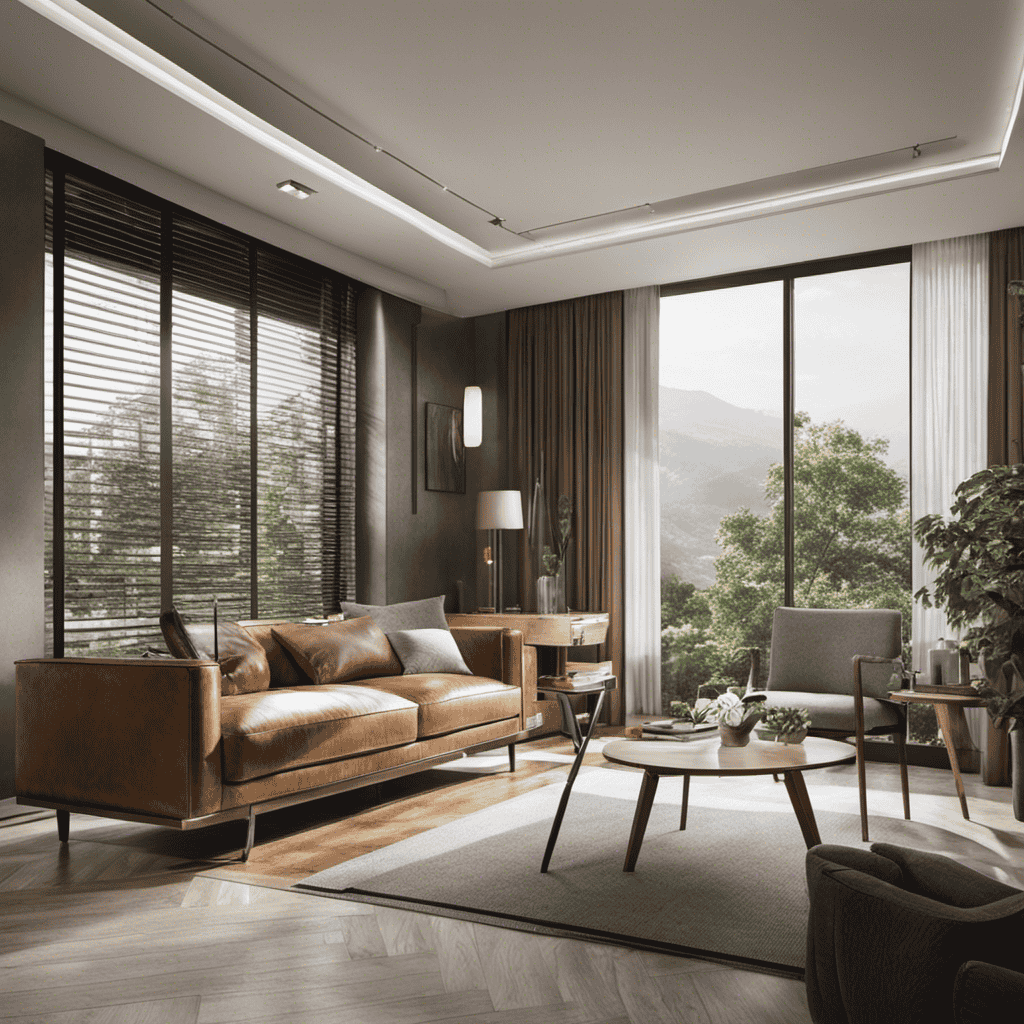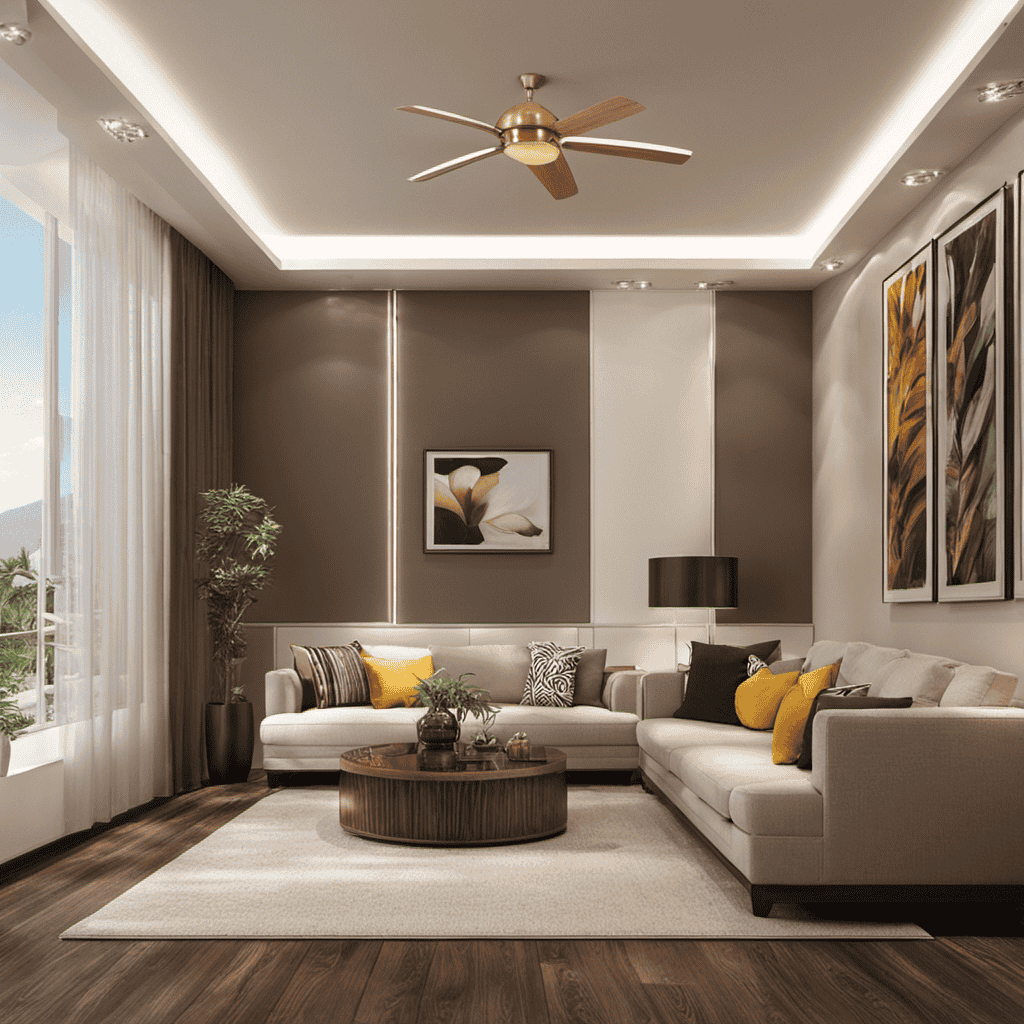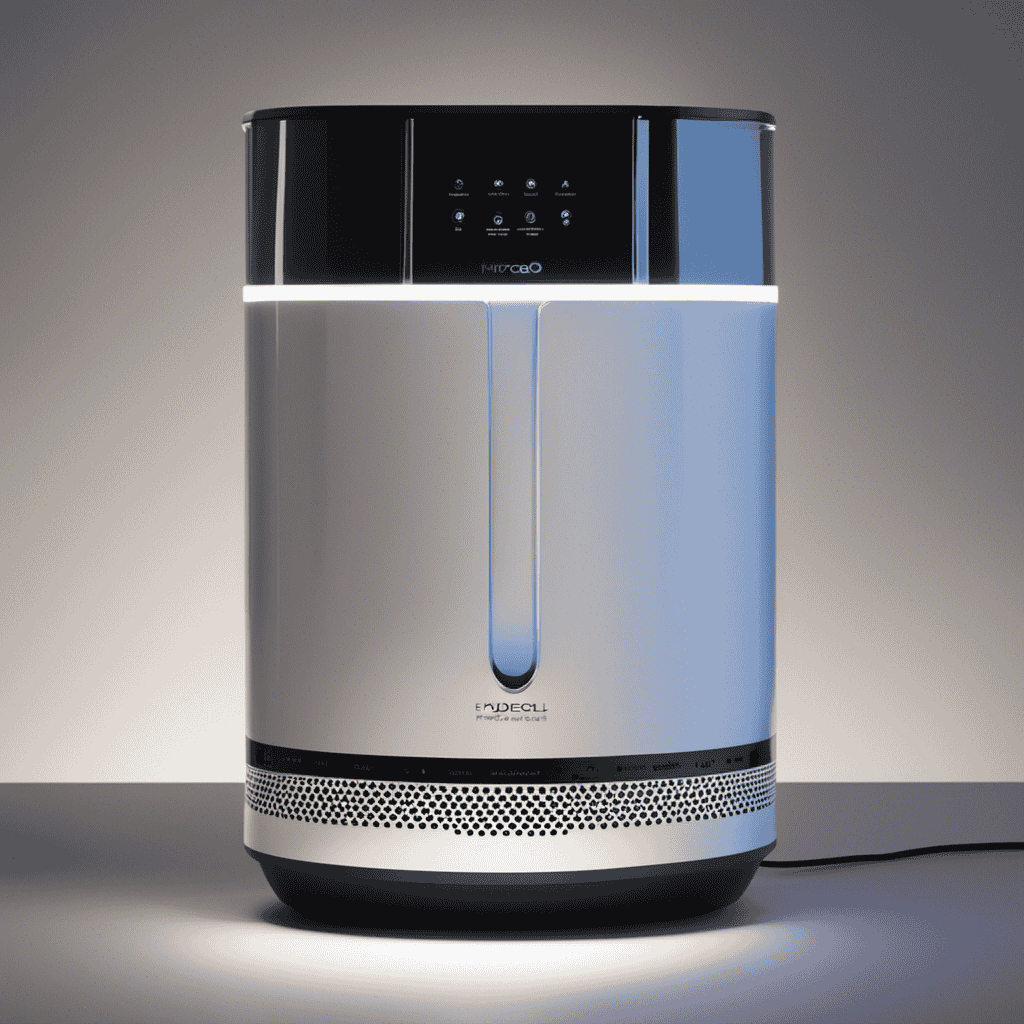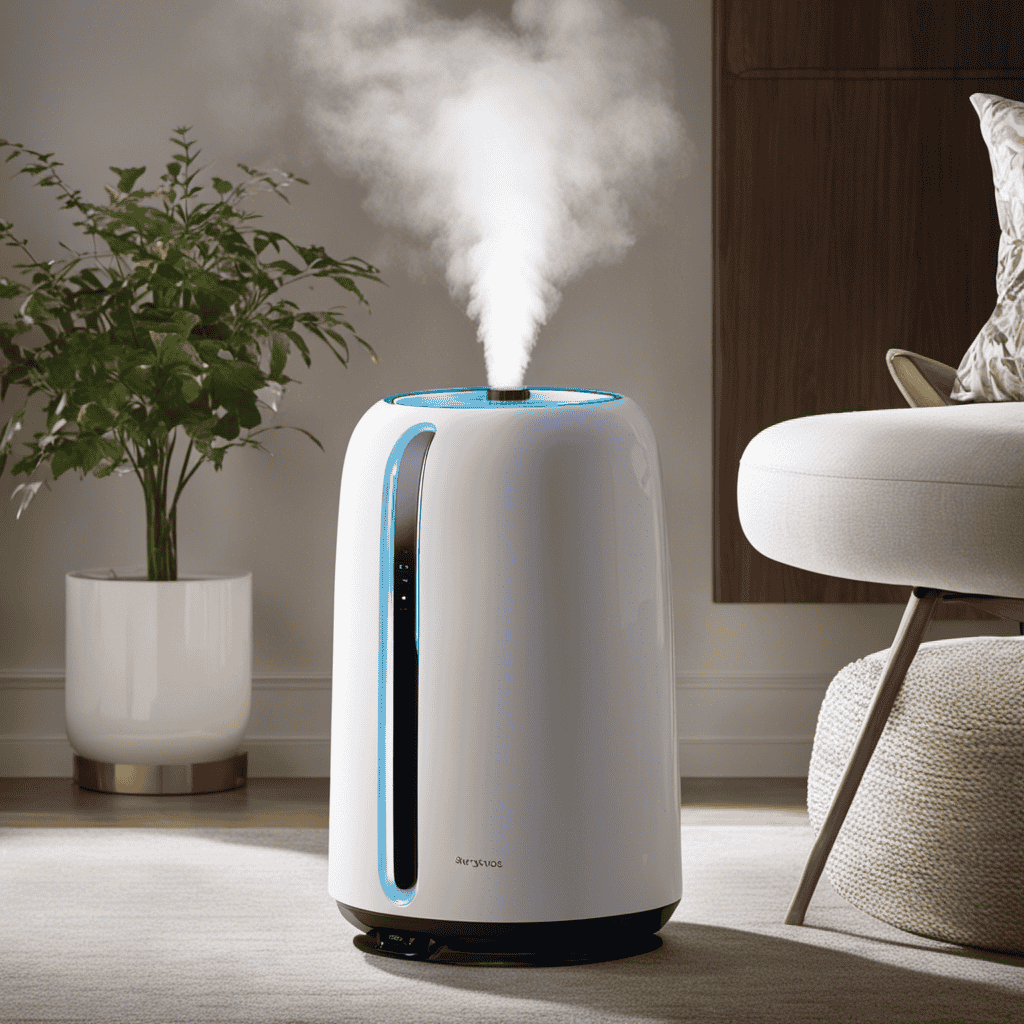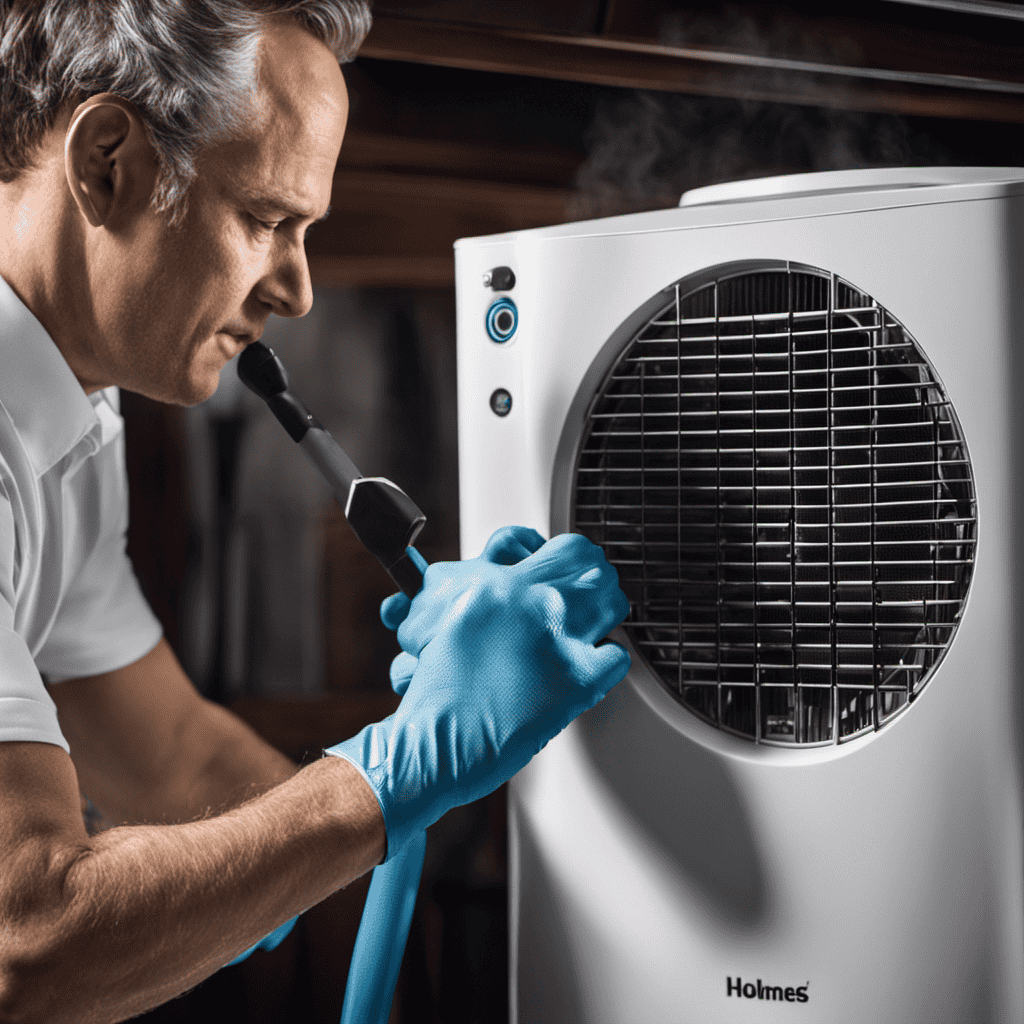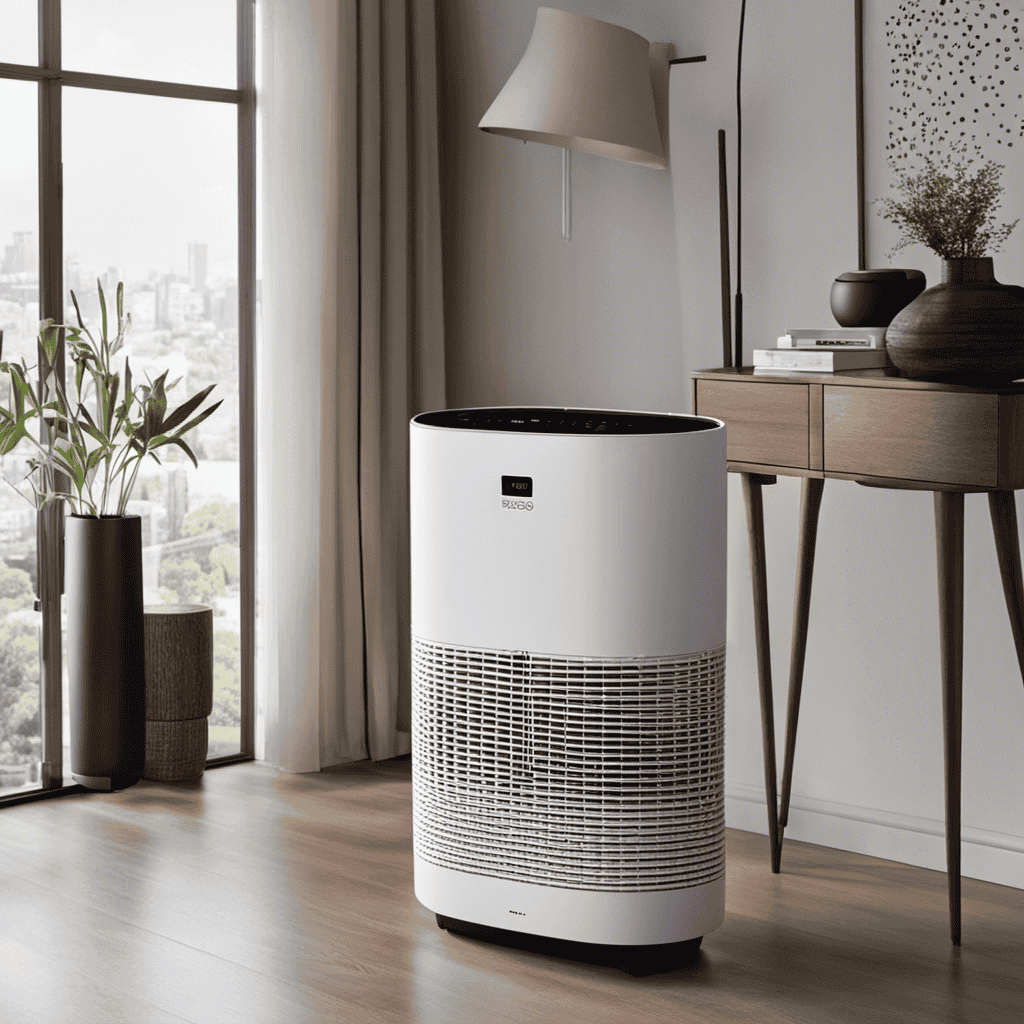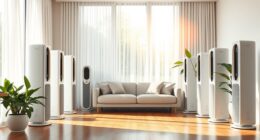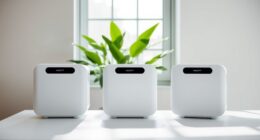As a homeowner, my goal is always to ensure that my family resides in a clean and healthy environment. This is the reason I chose to explore the realm of air purifiers.
Juxtaposing the desire for a healthier home with the overwhelming options on the market, I realized the importance of being well-informed before making a purchase.
In this article, I will share my research on the types of air purifiers, key factors to consider, and the various air purification technologies available.
So, let’s dive in and discover what you need to know before buying an air purifier.
Key Takeaways
- Different types of air purifiers have different effectiveness and benefits.
- Consider factors like room size, specific contaminants, and budget when choosing an air purifier.
- Understanding air purification technologies and filters is important for selecting the right one.
- Consider noise levels, energy consumption, and maintenance requirements when choosing an air purifier.
Types of Air Purifiers
There are several types of air purifiers available on the market. When it comes to choosing the right one, it’s important to understand the differences between HEPA and Ionizer purifiers, as well as UV C and Activated Carbon purifiers.
HEPA purifiers are highly effective at removing airborne particles, such as dust, pollen, and pet dander. They use a special filter that can capture particles as small as 0.3 microns.
On the other hand, Ionizer purifiers work by emitting negatively charged ions that attach to airborne particles, causing them to stick to surfaces and be removed from the air.
UV C purifiers use ultraviolet light to kill bacteria and viruses, while Activated Carbon purifiers use a porous carbon filter to absorb odors and chemicals. Both methods are effective in their own ways.
Factors to Consider
When considering factors for purchasing an air purifier, it’s important to evaluate the room size and the specific contaminants you want to remove.
To choose the right air purifier, you need to consider the square footage of the room where it will be placed. Different air purifiers are designed for different room sizes, so it’s crucial to select one that matches your needs.
Additionally, you should also consider the specific contaminants you want to remove from your indoor air. Some air purifiers are more effective at removing allergens like pollen and pet dander, while others are better at eliminating odors or capturing airborne particles.
It’s also worth researching different air purifier brands and pricing options to find the best fit for your budget and requirements.
Understanding Air Purification Technologies
When it comes to air purification, understanding the different types of filters and the effectiveness of various technologies is crucial.
Filters play a vital role in trapping and removing pollutants from the air. There are different types available, such as HEPA filters, activated carbon filters, and electrostatic filters.
Each filter type has its strengths and limitations. Knowing their effectiveness can help us make informed decisions when choosing an air purifier.
Types of Filters
One of the most common types of filters used in air purifiers is a HEPA filter. HEPA stands for High Efficiency Particulate Air, and these filters are designed to capture particles as small as 0.3 microns with an efficiency of 99.97%.
When it comes to air purification technologies, there are other types of filters worth considering:
-
Electrostatic Precipitator:
-
Uses an electric charge to trap particles on charged plates
-
More effective at capturing larger particles but less effective for smaller ones
-
Activated Carbon Filter:
-
Utilizes a porous carbon material to adsorb odors, gases, and chemicals
-
Effective in removing volatile organic compounds (VOCs) and unpleasant smells
These filters can be used alone or in combination with HEPA filters to enhance air purification. However, their effectiveness may vary depending on the specific air pollutants present.
Effectiveness of Technologies
If you’re considering different types of filters for your air purifier, it’s important to understand the effectiveness of each technology.
When it comes to ionizers versus ozone generators, there are notable differences. Ionizers work by releasing negative ions into the air, which attach to airborne particles and cause them to fall to the ground. However, ionizers do not remove these particles from the air completely, so they may still be present in your living space.
On the other hand, ozone generators are designed to release ozone, a highly reactive gas that can neutralize odors and kill bacteria. However, ozone can be harmful to human health, especially in high concentrations.
When comparing UV C light and activated carbon, UV C light can effectively kill bacteria and viruses by breaking down their DNA. Activated carbon, on the other hand, is excellent at removing odors and capturing chemicals and gases.
Both technologies have their own benefits and should be chosen based on your specific needs.
Coverage Area and Air Change Rate
To determine the right air purifier for your needs, it’s important to consider the coverage area and air change rate. The coverage area refers to the size of the space the purifier can effectively clean, while the air change rate indicates how quickly the purifier can cycle the air in that space.
When researching air purifier brands, it’s essential to check the coverage area and air change rate specifications. Here’s a breakdown of what to look for:
-
Coverage Area:
-
Consider the square footage of your room or space.
-
Look for a purifier that can handle the size of your area.
-
Air Change Rate:
-
Determine how quickly you want the air to be purified.
-
Find a purifier with a high air change rate for faster results.
By considering the coverage area and air change rate, you can ensure that the air purifier you choose will effectively clean the air in your space.
Don’t forget to also check the air purifier warranties to protect your investment.
Noise Levels and Energy Consumption
When considering an air purifier for your space, it’s important to also take into account the noise levels and energy consumption.
Noise levels can vary significantly between different models, so it’s crucial to choose one that suits your preferences and needs. Look for air purifiers that have adjustable fan speeds, as this can help you control the noise level based on your desired comfort level.
Additionally, pay attention to the energy efficiency of the air purifier. Energy-efficient models can help you save on electricity bills while still effectively cleaning the air in your space.
By considering both noise levels and energy efficiency, you can find an air purifier that provides a quiet and cost-effective solution to improving your indoor air quality.
Now, let’s move on to the next important aspect: maintenance and filter replacement.
Maintenance and Filter Replacement
Now that you’ve chosen your air purifier, it’s important to regularly clean and replace the filters to ensure optimal performance. Neglecting filter maintenance can lead to decreased efficiency and poor air quality.
Here are some key points to consider regarding the cost and lifespan of filters:
-
Cost of Filters:
-
Filters can vary in price depending on the brand and model of your air purifier.
-
Generally, higher-quality filters tend to be more expensive but offer better filtration.
-
Lifespan of Filters:
-
The lifespan of filters varies depending on factors such as air quality, usage, and filter type.
-
On average, HEPA filters need to be replaced every 6 to 12 months, whereas pre-filters may need replacement every 3 to 6 months.
Regularly checking and replacing filters is crucial to ensure your air purifier continues to effectively remove pollutants from your indoor environment. By following the manufacturer’s recommendations and considering the cost and lifespan of filters, you can maintain optimal air quality and prolong the lifespan of your air purifier.
Additional Features and Considerations
One important feature to consider is the presence of a timer on the air purifier, which allows you to set specific operating hours. This can be particularly useful if you want the air purifier to run only during certain times of the day or night. For example, you can set the timer to turn on the air purifier an hour before you usually go to bed, ensuring that you have clean air to breathe while you sleep. Additionally, some air purifiers offer smart home integration, allowing you to control them through voice commands or smartphone apps. This makes it even more convenient to operate the air purifier and monitor its performance. When it comes to aesthetic design, many air purifiers now come in sleek and modern designs, blending seamlessly with your home decor.
| Feature | Description | Example |
|---|---|---|
| Timer | Allows you to set specific operating hours for the air purifier | Set the air purifier to turn on an hour before bedtime |
| Smart Home Integration | Enables control of the air purifier through voice commands or smartphone apps | Control the air purifier with a simple voice command |
| Aesthetic Design | Air purifiers now come in sleek and modern designs, blending seamlessly with your home decor | Choose an air purifier that matches your interior design |
Frequently Asked Questions
Can Air Purifiers Remove Cigarette Smoke and Odors?
Yes, air purifiers can effectively remove cigarette smoke and odors. I have seen the benefits of using air purifiers in cars and offices, as they eliminate harmful particles and improve air quality.
Are Air Purifiers Effective in Reducing Pet Dander and Allergens?
Air purifiers effectively reduce pet dander and allergens in the air. Regular maintenance is crucial for optimal performance. When looking for the best air purifier brands, consider their ability to tackle these specific concerns.
Can Air Purifiers Help With Respiratory Conditions Like Asthma or Allergies?
Yes, air purifiers can help with respiratory conditions like asthma or allergies. Regular air purifier maintenance is important to ensure optimal performance. It’s crucial to address common misconceptions about air purifiers to make an informed purchase decision.
How Long Do Air Purifier Filters Typically Last Before Needing Replacement?
Air purifier filters typically last around 6 to 12 months before needing replacement. Regular air purifier maintenance is crucial to ensure optimal performance. Signs of a dirty air filter include reduced airflow and a buildup of dust.
Do Air Purifiers Produce Ozone or Any Harmful Byproducts?
Air purifiers can produce ozone and other harmful byproducts. It’s important to consider the safety of ozone emissions when purchasing an air purifier. Look for models that have low ozone emissions to ensure indoor air quality.
Conclusion
In conclusion, purchasing an air purifier is a wise investment for your health and well-being. While some may argue that air purifiers are expensive, the long-term benefits far outweigh the initial cost.
Clean air is essential for respiratory health, and an air purifier can effectively remove pollutants and allergens from your home or office. With various types, technologies, and features available, it’s crucial to do your research and choose the right one for your needs.
Don’t compromise on your health, and take the necessary steps to breathe cleaner air today.
